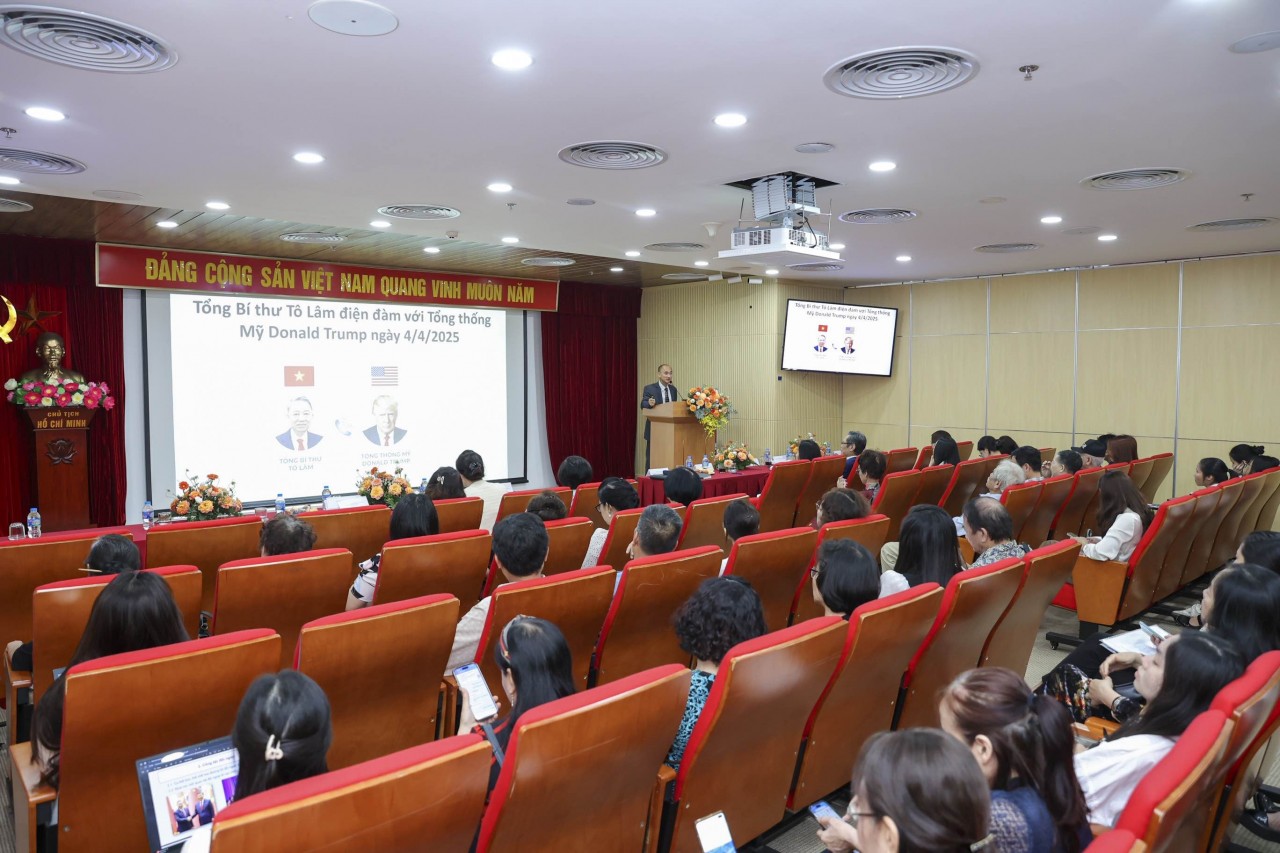Vietnam News Today (Oct. 12): Vietnam Shines at ASEAN Summits, Strengthens Regional Ties
| Vietnam News Today (Oct. 10): Vietnam, Cambodia, Laos Leaders Call for Enhanced Economic And Trade Cooperation | |
| Vietnam News Today (Oct. 11): Vietnam Treasures Cooperative Ties With EU And Its Members |
| Vietnam News Today (Oct. 12) notable headlines Vietnam shines at ASEAN Summits, strengthens regional ties: Deputy PM HSBC raises Vietnamese GDP growth forecast to 7.0% this year Chinese Premier’s Vietnam visit holds great significance to bilateral relations: Scholar Australia, Vietnam agree to beef up all-around co-operation Vietnam plans to develop a regional financial hub by 2035 Vietnam-China trade ties: A growing pillar of partnership PM returns home from successful ASEAN Summits in Laos Vietnam turns to nuclear technology for development PM’s attendance at ASEAN Summits affirms Vietnam’s spirit, vision in new era |
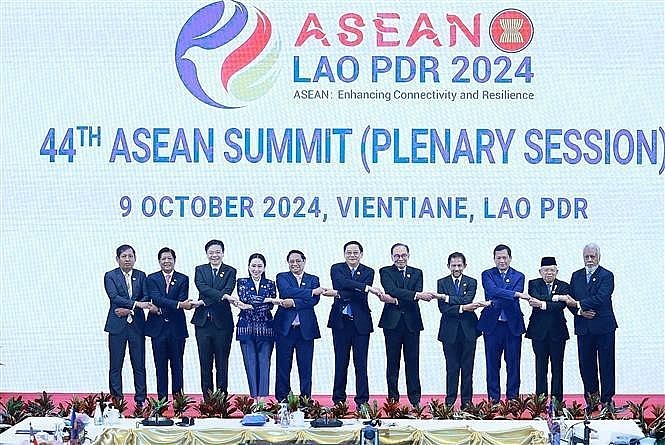 |
| Delegates at the 44th ASEAN Summit in Laos (Photo: VNA) |
Vietnam shines at ASEAN Summits, strengthens regional ties: Deputy PM
Deputy Prime Minister and Minister of Foreign Affairs Bui Thanh Son has highlighted the outcomes of the freshly-ended ASEAN Summits and related meetings in Vientiane, Laos from October 8-11, the Vietnamese delegation’s contributions and bilateral engagements with countries and partners.
Themed "ASEAN: Promoting Connectivity and Resilience", the 44th and 45th ASEAN Summits and related meetings featured nearly 20 activities, brought together more than 30 leaders from ASEAN countries and partners, more than 2,000 delegates, resulting in the adoption of nearly 90 documents. About 1,000 reporters came to cover the regional event.
Son said the events had ignited a spirit of resilience, unlocked connectivity potential in new and promising areas and awakened aspirations for the future.
Key achievements included the adoption of the ASEAN Vision Statement on the Indo-Pacific, aimed at establishing a regional framework with ASEAN at its center. Leaders also issued declarations on enhancing supply chain connectivity, sustainable agriculture, climate change response, and biodiversity.
New cooperation areas, such as the digital economy, digital transformation, green transition, and renewable energy, were highlighted in the vision statement strategies. These initiatives demonstrate ASEAN's proactivity, dynamism and vitality, while also providing a foundation for partners to strengthen ties with the region.
Throughout the four-day summits, PM Chinh and the Vietnamese delegation engaged in over 60 bilateral and multilateral activities.
PM Chinh's speeches opened up new mindsets, approaches and development ideas, stressing the need for resilience at all levels, strategic connectivity across all dimensions, and readiness for ASEAN's new development phase.
In bilateral meetings with high-ranking Lao leaders, PM Chinh reiterated Vietnam's commitment to its great friendship, special solidarity and comprehensive cooperation with Laos, cited VNA.
Both sides agreed to continue strengthening cooperation and effective connectivity in various fields, including transportation infrastructure, trade-investment, hi-tech agriculture, food security, quality human resources training, tourism, people-to-people exchange, digital transformation, green transition, circular economy, preservation and protection of relic sites that symbolize the Vietnam-Laos special solidarity.
The Vietnamese PM praised Laos' role as ASEAN Chair 2024, affirming Vietnam's readiness to enhance coordination with Laos and other countries to ensure the success of the summits, thereby contributing to Laos' prestige and ASEAN's solidarity and consensus.
Meetings with Lao and Cambodian counterparts focused on enhancing trilateral cooperation to meet practical needs and development requirements of a new era.
On the occasion, the Vietnamese leader had meetings with all senior leaders of participating countries and international organizations, during which they underscored their strong relationships with Vietnam and its growing stature on the international stage.
PM Chinh and the leaders also discussed the implementation of agreements and explored new collaboration fields, such as digital transformation, green transition, circular economy, semiconductor, and artificial intelligence (AI), creating opportunities for deeper, more effective and substantive collaboration between Vietnam and other nations.
Besides, leaders of Vietnamese ministries and agencies also met with their Lao counterparts and those from other countries to discuss specific measures to enhance cooperation in their respective fields.
The successful summits and bilateral engagements underscored Vietnam's proactive, positive, and responsible image, bolstering its relations with partners and contributing to ASEAN's solidarity and consensus, Son said.
HSBC raises Vietnamese GDP growth forecast to 7.0% this year
HSBC has raised its forecast for the nation’s GDP growth this year to 7.0%, compared with the previous projection of 6.5%, following the country’s GDP growth recorded in the third quarter accelerating to 7.4%.
This update has been released as part of the bank’s latest report titled “Vietnam at a glance: In its own league”.
HSBC experts outlined that despite facing economic losses from typhoon Yagi in September, industrial production in the third quarter of the year managed to beat their expectations
From a challenging 2023 and Q1, Vietnam is clearly back as ASEAN’s growth star, the bank said in its update “Vietnam at a glance: In its own league” released on October 11.
Q3 growth came in at 7.4% year-on-year, beating HSBC and consensus expectations of 6.2% and 6.1%, respectively, it said.
The outperformance continued to be led by manufacturing, which grew 11.4% year-on-year, according to HSBC. This was corroborated by healthy trade data, with exports rising 15.3% year-on-year in Q3.
The bank noted that the trade recovery that was initially centered around electronics is showing signs of broadening out, with textiles and footwear exports rising 16.7% year-on-year.
HSBC experts stated that while Typhoon Yagi likely played a role in weighing on export growth in September, the impact is expected to be short-lived, according to VOV.
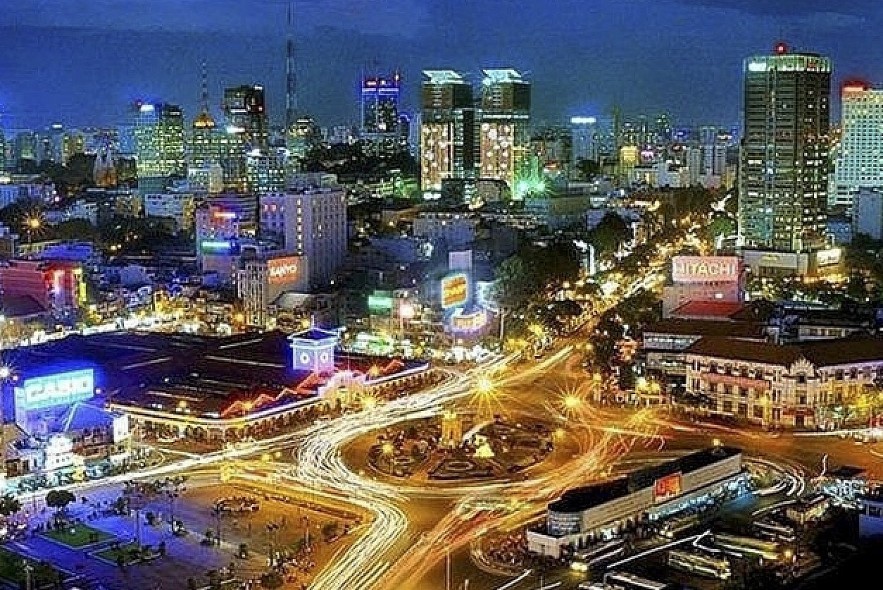 |
| Photo: VOV |
Indeed, the manufacturing PMI fell sharply into the contractionary territory in September, indicating a deterioration from the previous month as businesses assessed damages to production.
Although there have been some signs of bumps in global trade, leading indicators such as manufacturing industrial production and imports continued to post double-digit year-on-year growth, supporting the view that the manufacturing sector will remain firm.
In contrast, growth in the agro-forestry-fishery sector moderated as a reflection of Typhoon Yagi’s larger impact on the sector. The recovery in domestic-oriented services continued to remain relatively muted, with the spillover from a rebounding external sector not being as pronounced. Retail sales growth has shown little signs of accelerating, while monthly international tourist arrivals have stalled amidst rising regional competition to draw travelers.
However, there were encouraging signs such as financial services and real estate showing an acceleration in Q3. The revised Land Law effective August will buttress improving sentiment seen in the real estate sector, while ongoing government measures such as tax cuts should also support the domestic retail sector with time, said the bank.
On FDI, Vietnam continued to attract foreign inflows as fundamental prospects remain positive. Although growth in newly registered FDI moderated in Q3/24, sectors beyond manufacturing such as real estate and energy saw increases in investment.
According to HSBC, capital flows into manufacturing are likely to remain resilient in the future, as Party General Secretary and President To Lam's visit to the US has attracted interest from various companies such as Meta.
It went on to say that continued efforts to deepen ties with international partners will also act as a tailwind for further investment inflows, with Vietnam recently upgrading relations with France to a Comprehensive strategic partnership.
Inflation has shown a notable decline in recent months, thanks to the base effects and favorable price movements related to commodity prices and exchange rate fluctuations. Given falling global energy prices and a reversal in the global monetary policy cycle, inflation is expected to remain below the State Bank of Vietnam’s target ceiling of 4.5%.
HSBC keeps its 2025 GDP growth forecast unchanged at 6.5%. With the recovery still uneven, experts from the bank expect the State Bank of Vietnam to maintain its accommodative stance and the policy interest rate at 4.5% until the end of 2025.
Chinese Premier’s Vietnam visit holds great significance to bilateral relations: Scholar
The upcoming official visit to Vietnam by Chinese Premier Li Qiang reflects the positive and constructive exchanges and interactions between high-ranking leaders of the two countries, a Chinese scholar has said.
In an interview granted to Vietnam News Agency on the thresholds of the Chinese leader’s trip, Dr. Cheng Hanping, Director of the Vietnam Research Centre at the Zhejiang University of Technology, said the visit could be an opportunity for the Chinese leader to gain a deeper understanding of Vietnam through direct interactions.
Since taking office, this will be the first time Li visits Vietnam, clearly demonstrating the significance, mission, and symbolic value of the visit, the expert stressed.
In the context of the increasingly complex situation, the two countries need to work together to address threats and instabilities, while also building a community with a shared future community that carries strategic significance, Cheng noted.
He highlighted the importance of the trip, saying that interactions between Chinese and Vietnamese high-ranking leaders within Li’s visit are expected to further promote mutual strategic trust and strengthen the foundation for cooperation between the two sides, VNA reported.
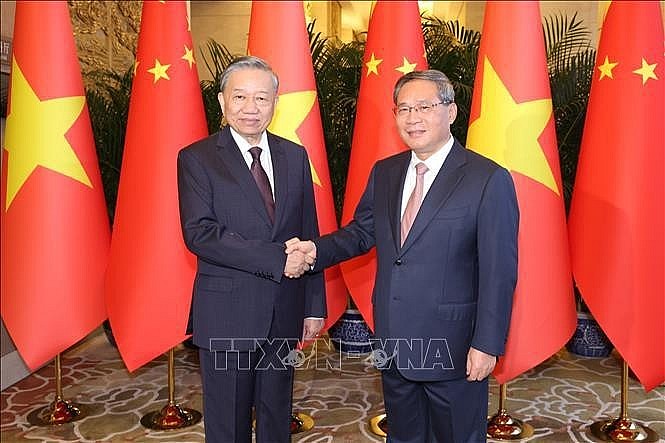 |
| Party General Secretary and President To Lam (L) and Chinese Premier Li Qiang. (Photo: VNA) |
Li has held important positions in several development regions of China, such as Jiangsu and Shanghai, and has extensive experience in economic development, so these experiences can be shared with Vietnamese counterparts, thus further boosting comprehensive cooperation between the two sides in economics and trade areas, the scholar said.
He stressed that this visit can set a crucial direction for China-Vietnam relations, not only enhancing exchanges and cooperation at all levels, especially in upgrading the quality and connectivity of economic and trade areas, but also playing a key role in promoting tourism and people-to-people exchanges between the two countries, lifting these areas of cooperation to new heights.
According to Cheng, there remains ample room for the two countries to step up cooperation in the coming time.
The two sides are collaborating on building railways in Vietnam in the time to come. In addition to technical and financial advantages, China also possesses experience and a skilled workforce.
Regarding party-building cooperation, the two sides have expanded their ties in this area across various sectors, with the fundamental aim of sharing experiences and enhancing governance capacity.
In terms of economic, trade, and investment cooperation, China recently successfully organized the 21st China-ASEAN Expo (CAEXPO), facilitating Vietnamese products’ penetration into the Chinese market. With a population of 1.4 billion and its geographical proximity to Vietnam, China has potential to become an unlimited consumer market for Vietnamese products.
For cultural exchange, the Chinese scholar said the Vietnam Research Centre at the Zhejiang University of Technology is developing a plan for exchange and cooperation with the Vietnam Academy of Social Sciences in 2025, thus contributing to promoting friendship and mutual trust, and upholding the role of scholars in fostering the China-Vietnam relations.
Australia, Vietnam agree to beef up all-around co-operation
Vietnamese Prime Minister Pham Minh Chinh and his Australian counterpart Anthony Albanese pledged to ramp up bilateral ties for peace, stability, and cooperation in the region, during their meeting held on October 11 in Vientiane.
At the meeting, which took place on the sidelines of the 44th and 45th ASEAN Summits and Related Summits, PM Chinh appreciated Australia’s support in overcoming the consequences of typhoon Yagi.
The two leaders noted with pleasure the fruitful developments recorded in bilateral relations over recent times and discussed further cooperation orientations for the time ahead, cited VOV.
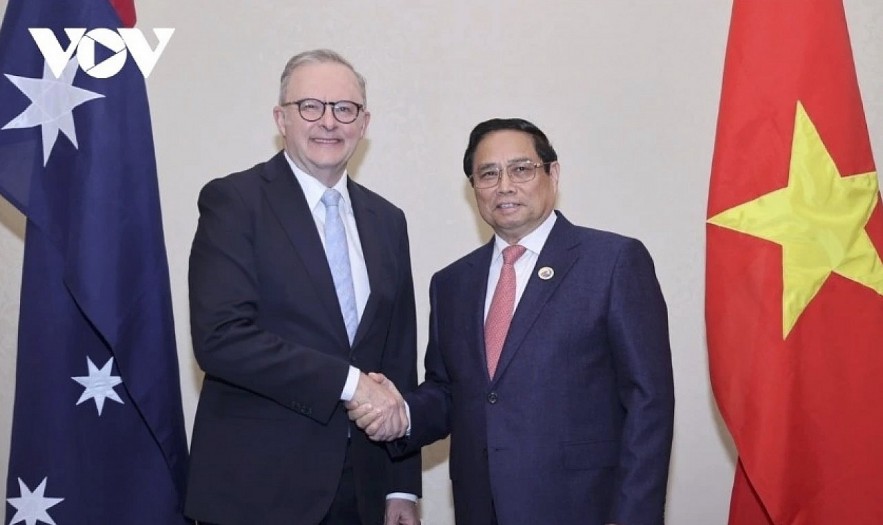 |
| Vietnamese Prime Minister Pham Minh Chinh (R) and his Australian counterpart Anthony Albanese. |
They agreed to maintain all-level delegation exchanges and meetings, continue effectively implementing the Vietnam-Australia Enhanced Economic Engagement Strategy (EEES), and promote collaboration in security-defense, labor, education-training, agriculture, science-technology, tourism, locality-to-locality connectivity, and people-to-people exchange, among other spheres.
The PMs also concurred to further instruct ministries and agencies of both nations to effectively implement the co-operation agreements reached by their leaders in the past.
PM Albanese affirmed that Australia places importance on boosting its relationship with the Vietnamese side, noting the upgrade of the bilateral relationship to that of a comprehensive strategic partnership marks a new chapter in relations.
Australia will continue to prioritize its official development assistance (ODA) to Vietnam, particularly in the areas where the nation has demand, such as climate change adaptation, energy transition, digital transformation, and digital economy, he pledged.
PM Chinh suggested that the Australian side make greater contributions to promoting dialogue, co-operation, and trust-building through ASEAN-led mechanisms, on the basis of respect for the bloc’s centrality, as well as consultations.
These efforts will serve to ensure peace, stability, and development in the region and the world as a whole, he said, calling on Australia to continue its support for ASEAN's efforts in narrowing the development gap, as well as its assistance to sub-regional cooperation, including the Mekong sub-region.
Vietnam plans to develop a regional financial hub by 2035
Vietnam aims to establish a regional financial center by 2035 and an international financial center by 2045, as outlined in a proposal presented to the government.
The Ministry of Planning and Investment (MPI) has submitted a proposal to the government that outlines the goal of establishing and developing a regional financial center by 2035, and an international financial center by 2045. The Prime Minister will lead the steering committee for the financial center.
In the draft proposal for building a regional and international financial center recently sent to the Prime Minister, the MPI recommends the comprehensive development of an international financial center in Ho Chi Minh City (with a focus on establishing it in District 1 and the new Thu Thiem Urban Area).
The regional financial center in Da Nang will precede the development of international financial services, linked with the Da Nang Free Trade Zone and a controlled sandbox mechanism in the fintech sector associated with innovation.
The establishment of regional financial centers, aiming towards an international financial hub, presents many challenges for Vietnam. However, if successful, the MPI states, it will yield significant results such as: connecting to the global financial market, attracting foreign financial institutions, leveraging opportunities from international investment capital flows, and promoting the effective development of Vietnam's financial market, reported VNN.
 |
| The MPI recommends applying a sandbox mechanism with business models utilizing technology in finance. Photo: Minh Ngoc. |
According to the MPI's proposal, the organizational structure of the financial center will include various agencies. The steering committee will serve as the highest coordinating and management body, determining development strategies and investments. The Prime Minister will serve as the head of this steering committee.
The supervisory body for the financial center will comprise representatives from the State Bank, Ministry of Finance, Ministry of Public Security, National Financial Supervisory Commission, and the local government where the financial center is located.
To ensure the resolution of disputes related to the financial center, an International Arbitration Center will be established under the financial center, similar to commercial arbitration centers but with some unique characteristics to ensure trust and convenience for stakeholders.
Proposals for special incentives for the financial center
Regarding the mechanisms and policies for building the financial center, the MPI has proposed a set of immediate policies, including: establishing a system and criteria for business registration/membership, allowing only one registration procedure for business establishment and enabling online registration without requiring projects or original documents; permitting the sandbox mechanism for business models utilizing technology in finance, including exchanges for cryptocurrency and digital assets; establishing a specialized exchange for the financial center.
There will be incentives for foreign banks to set up branches or relocate their offices to Vietnam’s financial center (such as tax and fee incentives); visa exemptions for foreign individuals working under invitations from organizations operating in the financial center for a maximum of 30 days, and up to 90 days for foreign investors with trading accounts at organizations operating in the financial center; exemptions from work permits or a fast-track process for foreign individuals working in the financial center, along with a streamlined process for long-term visa and residence card issuance for their spouses and minor children.
Policies will continue to be researched and considered after 2035, including: applying case law to regulate financial and commercial activities within the financial center and establishing an independent financial court, allowing foreign judges to participate in legal proceedings; establishing a legal framework and operating the national central bank's digital currency (CBDC).
The proposal for building a regional and international financial center aims for:
- Establishing and developing a regional financial center by 2035.
- Establishing an international financial center by 2045.
Regarding the Global Financial Centers Index (GFCI): By 2035, Vietnam aims to rank in the top 75 financial centers worldwide and the top 25 in the Asia-Pacific region. By 2045, it aims to be in the top 20 financial centers globally and the top 10 in the Asia-Pacific region.
In terms of fintech ranking, by 2035, Vietnam aims to be in the top 75 financial centers globally, the top 25 in the Asia-Pacific region, and third in ASEAN; by 2045, it targets the top 20 financial centers globally, the top 10 in the Asia-Pacific region, and the runner-up in ASEAN.
According to the 36th GFCI report (September 2024), Ho Chi Minh City scored 609 points in fintech, ranking 100th out of 116, rising four places and six points compared to the previous report.
Compared to financial centers in the region, Ho Chi Minh City ranks below Jakarta, Indonesia (94th), but above Manila, Philippines (101st), and Bangkok, Thailand (102nd).
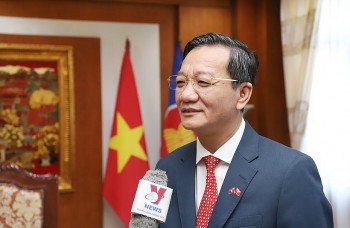 | Vietnam News Today (Oct. 8): Vietnam Makes Wholehearted Contributions to ASEAN Vietnam News Today (Oct. 8): Vietnam and France elevate ties to Comprehensive Strategic Partnership; PM Pham Minh Chinh leaves for Laos to attend ASEAN Summits; ... |
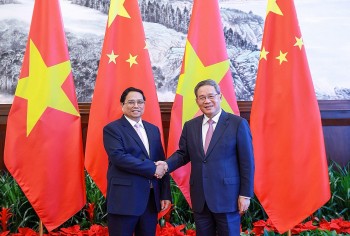 | Vietnam News Today (Oct. 9): Chinese Premier Li Qiang to Make First Official Visit to Vietnam Vietnam News Today (Oct. 9): Vietnam, Indonesia coast guards strengthen cooperation; UOB ups Vietnam’s 2024 GDP growth forecast to 6.4%; Chinese Premier Li Qiang to ... |
In topics
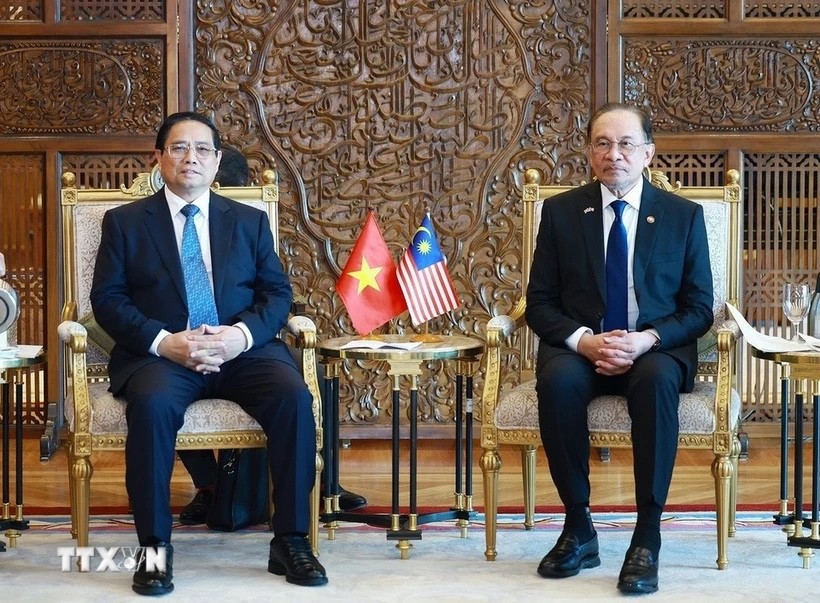 National
National
Vietnam News Today (May 31): Vietnam Strongly Supports Laos’s National Development
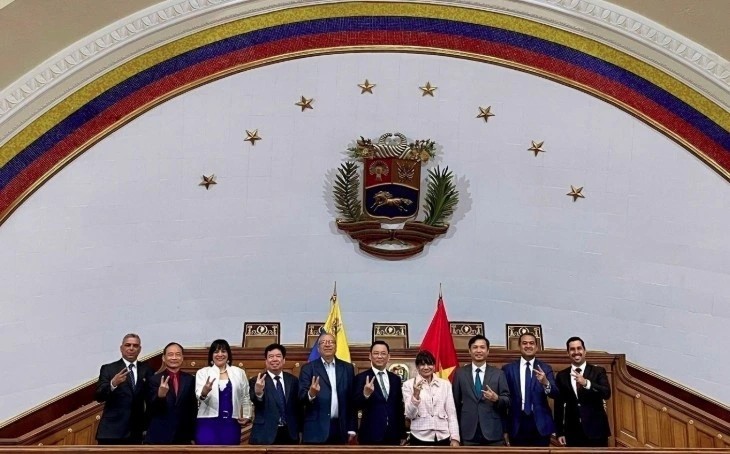 National
National
Vietnam News Today (May 30): Vietnam, Venezuela Reinforce Ties Through People-to-people Diplomacy
Recommended
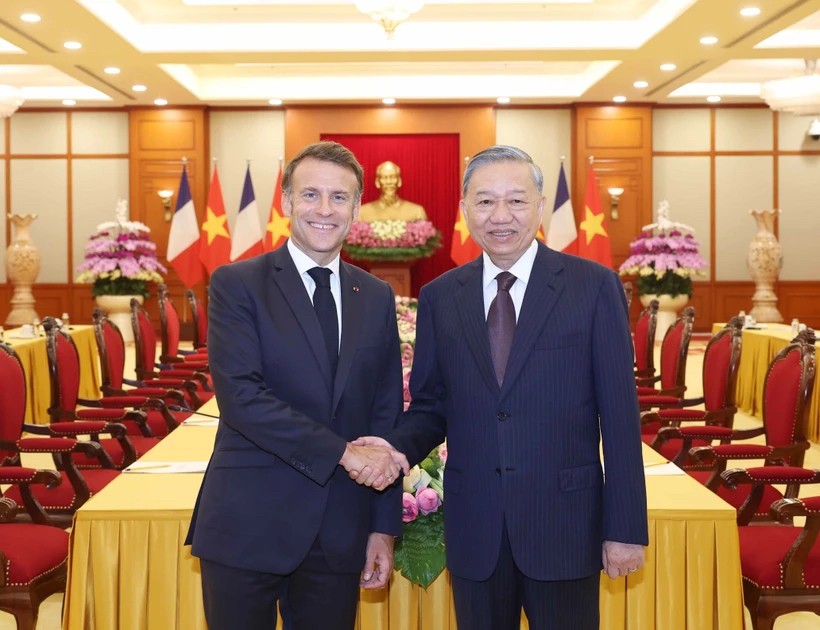 National
National
Vietnam News Today (May 27): Vietnam Treasures Multifaceted Collaboration with France
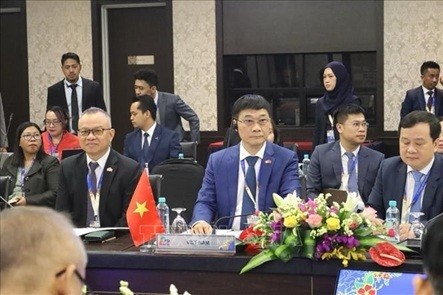 National
National
Vietnam Commits to Building an Inclusive, Sustainable and Cohesive ASEAN
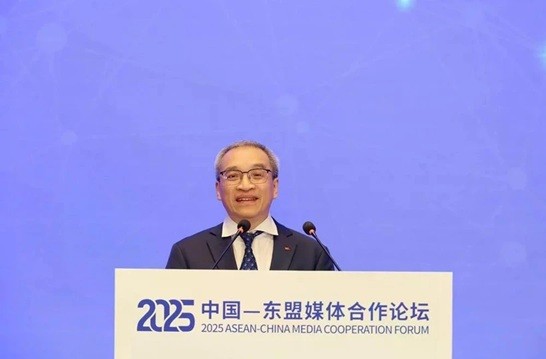 National
National
Vietnam Proposes Vision for Responsible Digital Journalism Cooperation
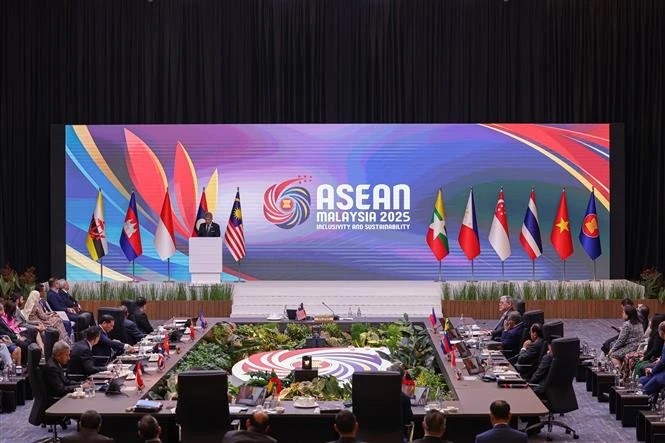 National
National
Vietnam News Today (May 26): Vietnam Attends ASEAN Meetings for Promoting Regional Cooperation
Popular article
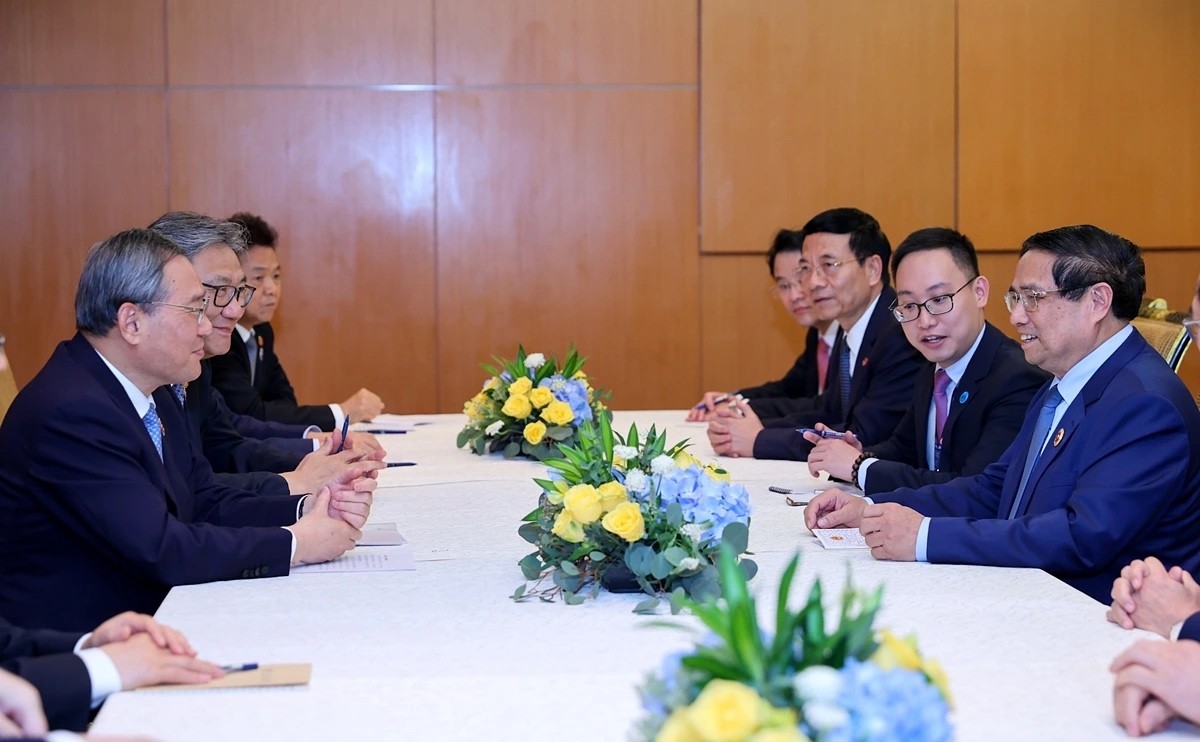 National
National
Vietnam News Today (May 28): Vietnam and China Discuss Strategic Cooperation Orientations
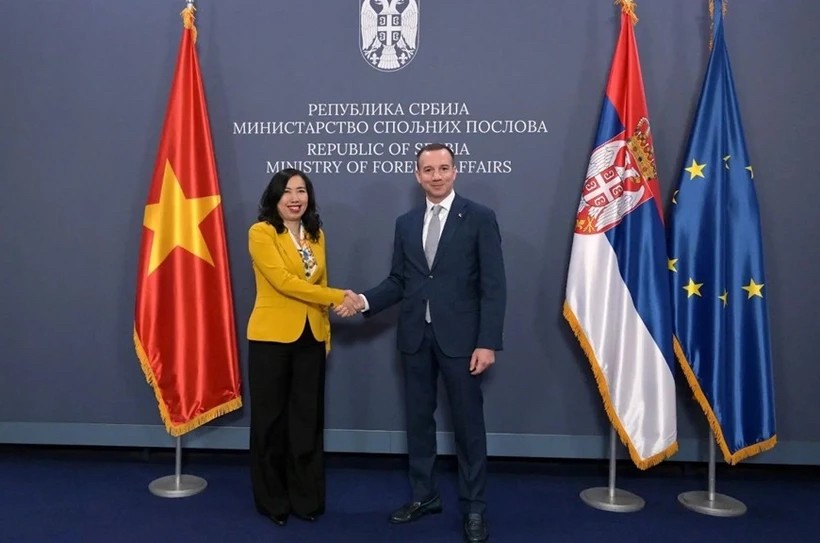 National
National
Vietnam News Today (May 25): Vietnam, Serbia Hold Political Consultation
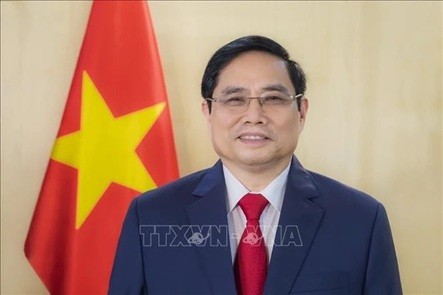 National
National
PM to Depart for Official Visit to Malaysia, Attendance at 46th ASEAN Summit
 National
National




